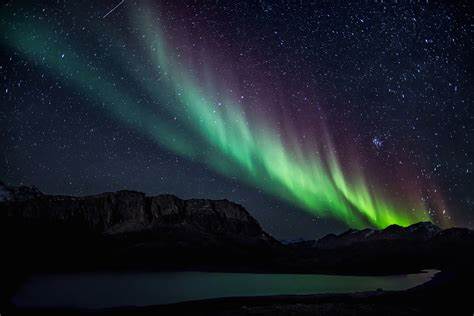For the second time in a week, unsettled space weather has created a stunning aurora display over Alberta, with skies lighting up when the local weather permitted.
On Thursday, severe G4 geomagnetic storm conditions were observed globally due to a series of recent coronal mass ejections (CMEs) from the sun. These storms, fueled by streams of solar particles, disturb Earth’s geomagnetic field and can disrupt technologies like satellite communications, GPS systems, radio transmissions, and power grids, according to the U.S. National Oceanic and Atmospheric Administration’s (NOAA) Space Weather Prediction Center (SWPC).
A striking side effect of these solar storms is the appearance of the northern lights, often visible much farther south than usual during intense storms. On Thursday, the SWPC predicted a high chance of auroras across Alberta and most of Canada.
However, local weather conditions threatened to obscure the view, with Calgary’s forecast calling for partly cloudy skies from Thursday evening into Friday morning, and similar conditions expected across Alberta. Fortunately, many areas had enough clear sky to provide a spectacular view of the celestial light show.
This latest aurora follows another vivid display that took place from Monday night into Tuesday morning. That event was so powerful that its brilliant colors were visible to the naked eye even in light-polluted urban centers. “Monday’s aurora display was perfectly positioned over Calgary,” said David J. Knudsen, a professor in the physics and astronomy department at the University of Calgary, speaking to Postmedia. Similar scenes were reported throughout the province.
While the current solar storm is not expected to surpass the strength of one in May, which was the most intense in over two decades, it could still produce northern lights as far south as the lower Midwest and Northern California, NOAA said. Skywatchers are reminded that smartphone cameras may capture auroras invisible to the human eye.
May’s solar storm lit up skies over Calgary and the Northern Hemisphere without causing any significant technological disruptions. The sun is currently nearing the peak of its 11-year activity cycle, driving this increase in solar storms and aurora sightings.



